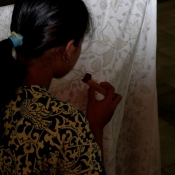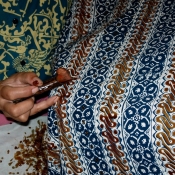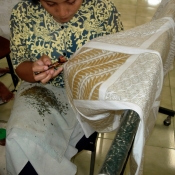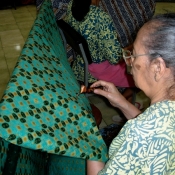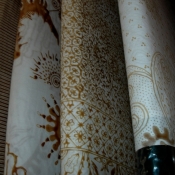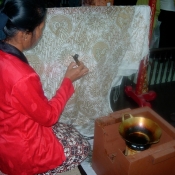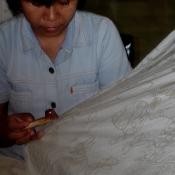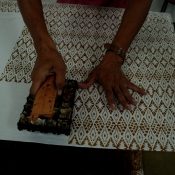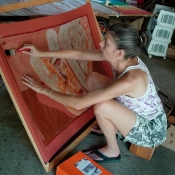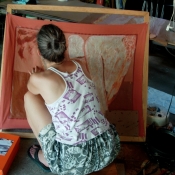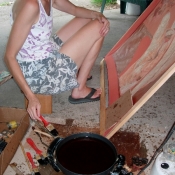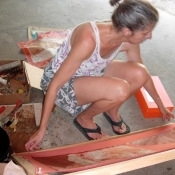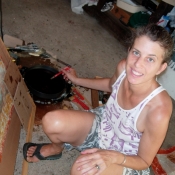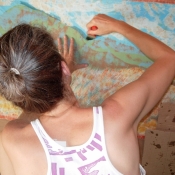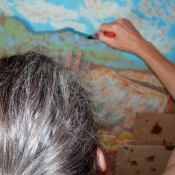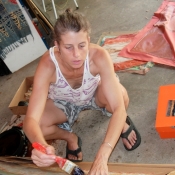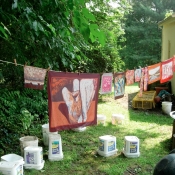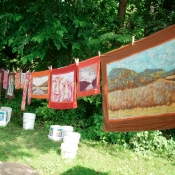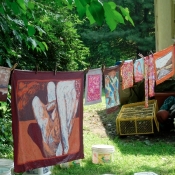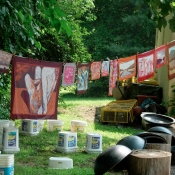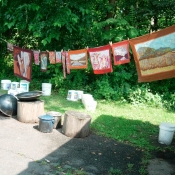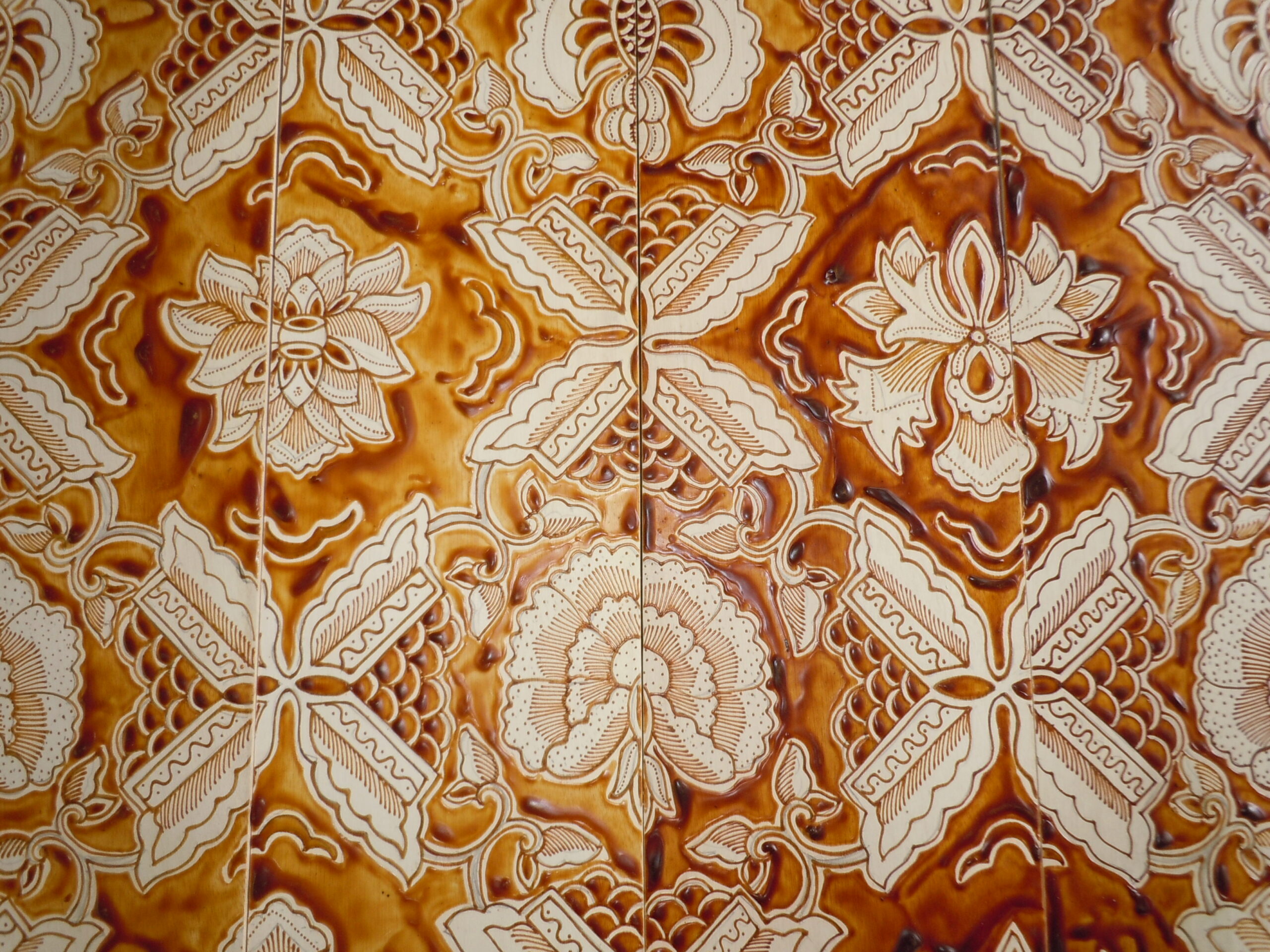
What is Batik?
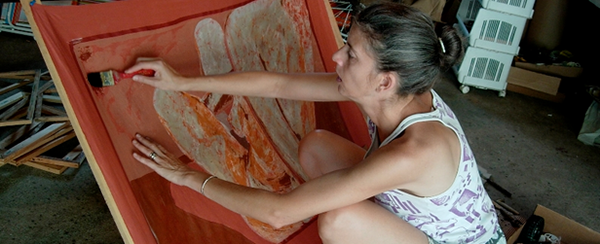
Laura In The Studio
Batik is a wax-resist method as well as an ancient and unique art form. Traditionally used to ornament cloth fabric, the same techniques and tools are used today by contemporary batik designers and painters. Starting with white, clean 100% cotton stretched on a wooden frame, hot wax is applied with either a canting (pronounced “chanting,” the traditional implement used for drawing with liquid hot wax onto cloth), tjap (pronounced “chop”, another traditional tool made of intricate coils of copper to make a relief print of wax on the cloth), or paint brush, the artist blocks out the areas to remain white. The cloth is then dipped in the first color – for example, yellow – followed by a fixative that sets the color. When the cloth dries, it is restretched onto the frame and hot wax is applied to block the areas that will remain yellow. Each color achieved requires a double process: waxing and dyeing. Where there is a layer of wax, color will not go. Colors generally are applied from light to dark, keeping in mind that the layering of dyes creates totally different affects and tones than the pure color. (For example, red on top of yellow makes orange). This two-stage process – waxing and dyeing for each color – is repeated until the painting is completed. The final stage is removing the wax. In a large pot of hot water, not quite boiling, the painting is dipped again and again until the wax is removed. After rinsing in cold water and scraping the final wax off, the piece is hung up. When the completed piece dries, a batik painting is born.

